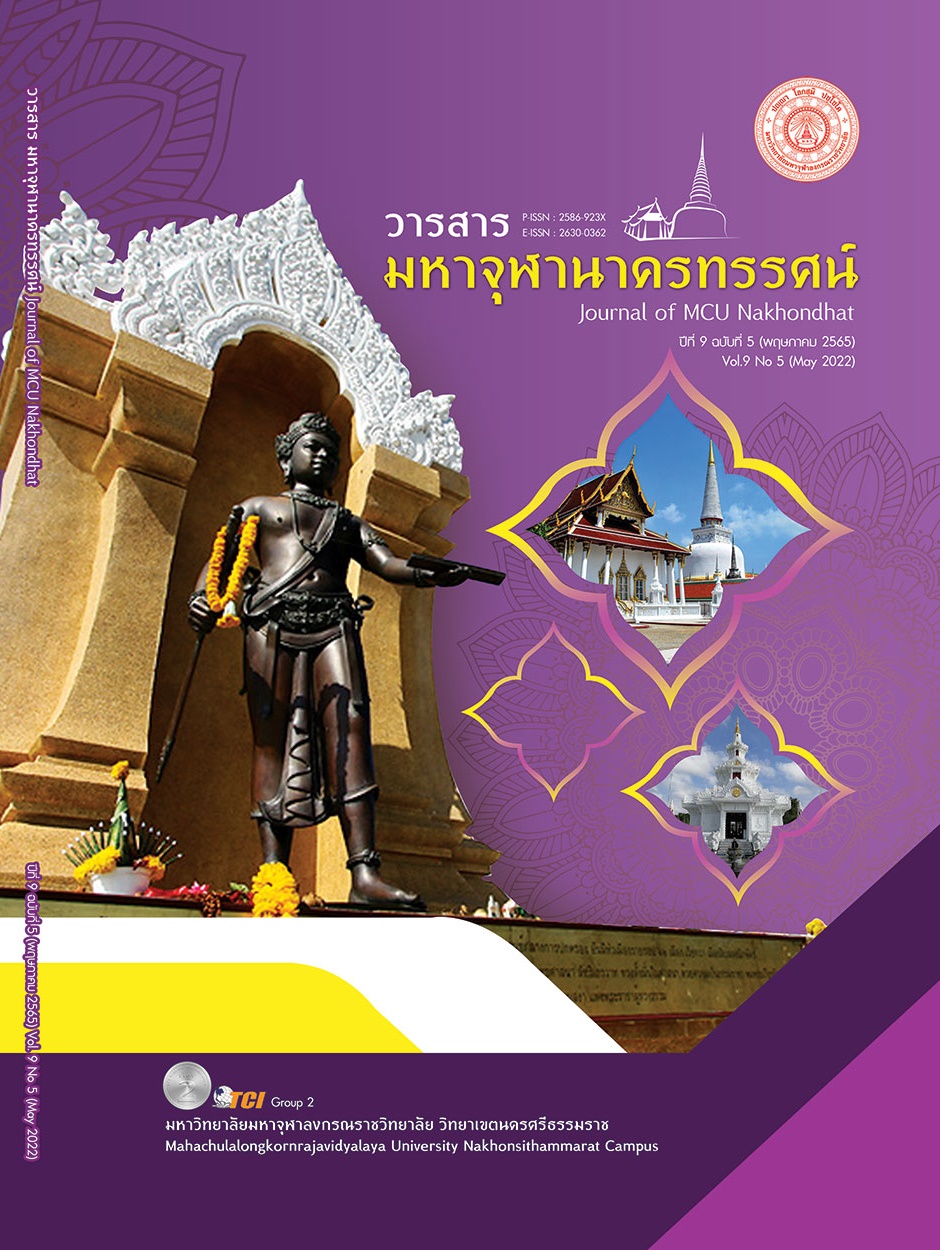NEW MEDIA COMMUNICATION STRATEGIES OF THE PUBLIC HEALTH MINISTRY AND PUBLIC TRUST DURING THE COVID-19 PANDEMIC
Main Article Content
Abstract
The objectives of this research article were to study communication strategies through the new media of the Ministry of Public Health and to study the communication guidelines to promote public trust. The study used qualitative research design, divided into two parts: a study of communication strategies through the new media of the Ministry of Public Health during Thailand’s fourth wave of the COVID-19 epidemic between 20 July – 30 September 2021 through document analysis; and a study of communication guidelines for promoting public trust through in-depth interviews with 15 key informants, including academics, public newspersons, medical professionals, and information receivers. The results indicated that communication strategies implemented by Ministry of Public Health included: 1. Trending topics, 2. Reliable sources of information, and 3. Forms of communication that include the following: 1) Communication via a third party, 2) Communication via images, 3) Participation, 4) Using hashtags, 5) Using a variety of media, and 6) Using a variety of channels. In addition, communication guidelines to promote public trust include 1. The communication should be conducted based on a sender-oriented form by relying on a knowledgeable, close, relevant, and communicatively skilled sender. Besides, a sender should possess emotional maturity, a good communication rhythm, the ability to analyze receivers, straightforwardness, empathy, the ability to use proactive communication, and role review. 2. Communication channels should be fast, easily accessible and easy to use, published through media with multi-dimension and multiple ways. 3. Information should be accurate, fast, easy to understand, concise, clear, consistent, complete, contains academic information. in accordance with the operational guidelines reliable, reliable source with a single data set, prevention of fake news and efficient media design. 4. Receiver should compare information from many sources by only selecting to receive information from the mainstream media or an expert
Article Details

This work is licensed under a Creative Commons Attribution-NonCommercial-NoDerivatives 4.0 International License.
References
กรมควบคุมโรค. (2563). คู่มือเจ้าหน้าที่สาธารณสุขในการตอบโต้ภาวะฉุกเฉินกรณีการระบาดโรคติดเชื้อไวรัสโคโรนา 2019 ในประเทศไทย. เรียกใช้เมื่อ 16 สิงหาคม 2564 จาก https://ddc.moph.go.th/viralpneumonia/file/g_other/g_other05.pdf
กิติมา สุรสนธิ. (2559). การสำรวจสภาพการณ์การสื่อสาร พ.ศ. 2556 เพื่อการกำหนดนโยบายการสื่อสารในภาวะน้ำท่วม. วารสารศาสตร์, 9(12), 7-23.
บุญชม ศรีสะอาด. (2554). การวิจัยเบื้องต้น. กรุงเทพมหานคร: สุริวิยาสาสน์.
พชรพจน์ นันทรามาศ และคณะ. (2564). Economic Outlook 2021. เรียกใช้เมื่อ 16 สิงหาคม 2564 จาก https://krungthai.com/Download/economyresources /EconomyResourcesDownload_454Economic_Outlook_13_01_64.pdf
พระราชบัญญัติโรคติดต่อ พ.ศ.2558 (ฉบับที่1). (2558). ราชกิจจานุเบกษา เล่มที่ 132 ตอนที่ 86 ก หน้า 27 (8 กันยายน 2558).
ภัทรวรรณ ปิ่นแก้ว. (2555). การสื่อสารเพื่อสร้างความเข้าใจกับสาธารณชนเรื่องไข้หวัดใหญ่สายพันธุ์ใหม่ (H1N1) 2009. ใน วิทยานิพนธ์ สาขานิเทศศาสตรพัฒนาการ. จุฬาลงกรณ์มหาวิทยาลัย.
ส่งศรี ชมพูวงศ์. (2547). การวิจัย. นครศรีธรรมราช: มหาวิทยาลัยราชภัชนครศรีธรรมราช.
Bickham, S. & Francis, D. (2021). The Public’s Perceptions of Government Officials’ Communication in the Wake of the COVID-19 Pandemic. Journal of Creative Communications, 16(2), 190-202.
IFRC, & Unicef. (2020). Building Trust Within and Across Communities for Health Emergency Preparedness. Retrieved 5 September 2021 from https:// r eliefweb.int/sites/reliefweb.int/files/resources/IFRC_UNICEF_Building_Tru st_within_and_across_communities_Jul2020.pdf
Paek, H. & Hove, T. (2021). Information Communication Technologies (ICTs), Crisis Communication Principles and the COVID-19 Response in South Korea. Journal of Creative Communications, 16 (2), 213-221.


